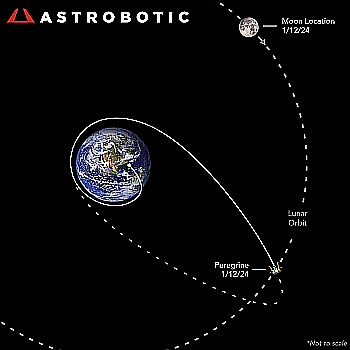Bi-partisan bill proposed giving space traffic management to Commerce, not FCC
On January 25, 2024 a bill sponsored by a bi-partisan group of senators was introduced assigning the job of managing orbital traffic and the removal of defunct satellites to the Commerce Department, essentially telling both the FCC and NOAA that the attempt by those agencies to grab this power, outside of their statutory authority, will be opposed by elected officials.
The bill puts the responsibility of managing satellite and spacecraft traffic and the regulations regarding de-orbiting satellites to Office of Space Commerce (OSC) within Commerce. It is also supported by the comercial industry, which has not been happy especially with the FCC’s regulatory power grab. Unlike the regulations the FCC is creating, this bill relies heavily on industry advice and consensus, the very people who not only know best what needs to be done, but are the only ones qualified to do it.
Of course, the bill must pass both the Senate, House, and be signed by the President before it becomes law. Whether that can happen remains uncertain, especially since there appear to be a lot of factions inside DC who want to give federal agencies like the FCC legal carte blanche to regulate however they see fit, superseding Congress, the Constitution, and the law. And it seems that Congress now is so weak, those factions might just get what they want.
On January 25, 2024 a bill sponsored by a bi-partisan group of senators was introduced assigning the job of managing orbital traffic and the removal of defunct satellites to the Commerce Department, essentially telling both the FCC and NOAA that the attempt by those agencies to grab this power, outside of their statutory authority, will be opposed by elected officials.
The bill puts the responsibility of managing satellite and spacecraft traffic and the regulations regarding de-orbiting satellites to Office of Space Commerce (OSC) within Commerce. It is also supported by the comercial industry, which has not been happy especially with the FCC’s regulatory power grab. Unlike the regulations the FCC is creating, this bill relies heavily on industry advice and consensus, the very people who not only know best what needs to be done, but are the only ones qualified to do it.
Of course, the bill must pass both the Senate, House, and be signed by the President before it becomes law. Whether that can happen remains uncertain, especially since there appear to be a lot of factions inside DC who want to give federal agencies like the FCC legal carte blanche to regulate however they see fit, superseding Congress, the Constitution, and the law. And it seems that Congress now is so weak, those factions might just get what they want.





